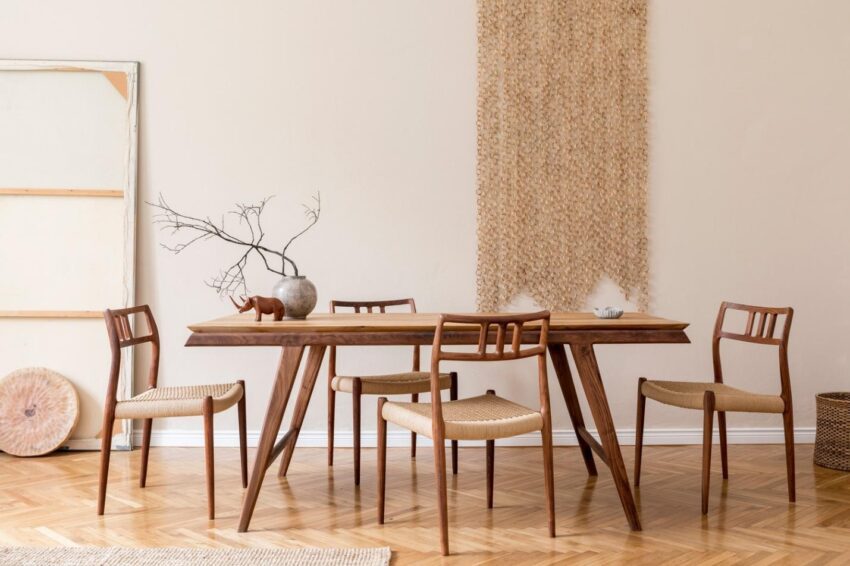Choosing a dining table seems simple. Until you realize how much it affects your day-to-day life. The right one needs to handle morning breakfasts, last-minute homework, messy art projects, and long meals with extended family.
This guide lays out practical advice to help you decide what kind of table works for your household, without getting bogged down in trends or showroom hype.
Start with How You Live
Some families eat every meal together; others mostly use the dining room for Sunday dinners or special occasions. Maybe it doubles as a workspace during the week. The goal is to find a piece that works as hard as you do.
If your house leans into big shared meals or casual dinners, then solid, everyday function matters more than eye-catching features. That’s why many families shopping for dining tables in Perth are drawn to wide, sturdy options with enough space for everyone to spread out. But this isn’t limited to one location. Homes anywhere can benefit from thinking through how the table will be used day in, day out.
Size Isn’t Everything, But It’s a Good Place to Start
Getting the dimensions wrong can throw off the entire space. If the table’s too big, it cramps movement. Too small, and you’re constantly squeezing in chairs. Here’s a basic rule of thumb: leave at least 36 inches (or 3 feet) of clearance around the table for comfortable traffic flow. This gives everyone room to pull out chairs and pass behind one another without awkward sidestepping.
Measure your dining space before you start browsing. A table that looks compact in a showroom can feel overwhelming in a small room. On the flip side, a larger table can feel right at home in open-plan spaces or homes with larger gatherings in mind.
Shape Influences Function and Flow
Table shape affects conversation, seating, and how it fits the room. Common shapes like rectangular and round each have their perks.
A rectangular table works well in most homes and fits long, narrow rooms. It’s also practical for everyday use since it usually seats more people. If space allows, an oval dining table gives you similar seating but softens the lines visually.
A square table suits square rooms and smaller households. It keeps things cozy but may feel cramped if more than four people sit regularly. For families with limited space, oval tables or round tables without sharp corners may help maintain smoother movement.
Materials That Work Hard
Choose a table that can take daily wear while holding its shape, literally and figuratively. Solid wood remains a top choice because it’s durable and repairs well over time. Oak, maple, and walnut are excellent choices for families who want a table that grows old with them.
Glass tables give off a light, airy feel and are easy to match with different design styles, but they may not be the best pick if fingerprints and frequent cleaning are an issue in your home.
For a more industrial look, metal tables, especially those with stainless steel finishes, can handle tough use, though they may feel cold in tone. Consider your flooring and wall colors if you’re thinking about how to maintain balance and warmth.
Extendable Options and Flexible Seating
If you regularly host a dinner party or extended family dinners, consider extension tables. These give you flexibility without sacrificing everyday space. You get a room when you need it and a tidier footprint the rest of the time.
Pair that with versatile seating options like stackable chairs or benches that slide under the table. If your space is tight, even breakfast nooks can benefit from space-saving table designs that adapt as needed.
Legs, Height, and Everything Under the Table
Pay attention to the table legs because they affect how many people can sit comfortably. Pedestal bases free up more knee room, while four-legged models may limit where chairs can go.
Standard dining height falls around 29 to 30 inches. Make sure to match it with chairs that leave enough lap room. If you want to mix things up, counter-height tables can create a more relaxed feel, especially in open-concept homes, but check your table dimensions before switching styles.
Matching Your Table with the Rest of the Room
The table should fit your home’s tone. Timeless style means your table doesn’t clash with the rest of your space a few years down the line. If your home leans toward traditional, look for rich woods and classic shapes. For a more modern design, tables with clean lines, glass, or minimalist silhouettes are often easier to pair.
Stick with staple hues that won’t fight with flooring or wall colors. If you want a touch of elegance, you can add it through chairs, lighting, or accessories rather than through the table itself.
Think Long-Term
A dining table isn’t something you buy every year. Treat it like an investment piece, something that holds up as your family grows or routines shift. Think beyond the next dinner and into what your next five years might look like. Kids are growing up, so do we have more hosting or maybe less?
If you’re caught between options, lean toward what gives you additional space and practical use. That might mean going for a larger table or choosing a finish that hides wear better. Look at your current habits, and picture how they’ll evolve.
Conclusion
Instead of asking, ‘What’s the best table?’, try asking, ‘What does our family need from this table every week?’ That simple shift leads you to smarter, longer-lasting choices. When you think about lifestyles, instead of labels, you end up with furniture that supports the way your home really works.


